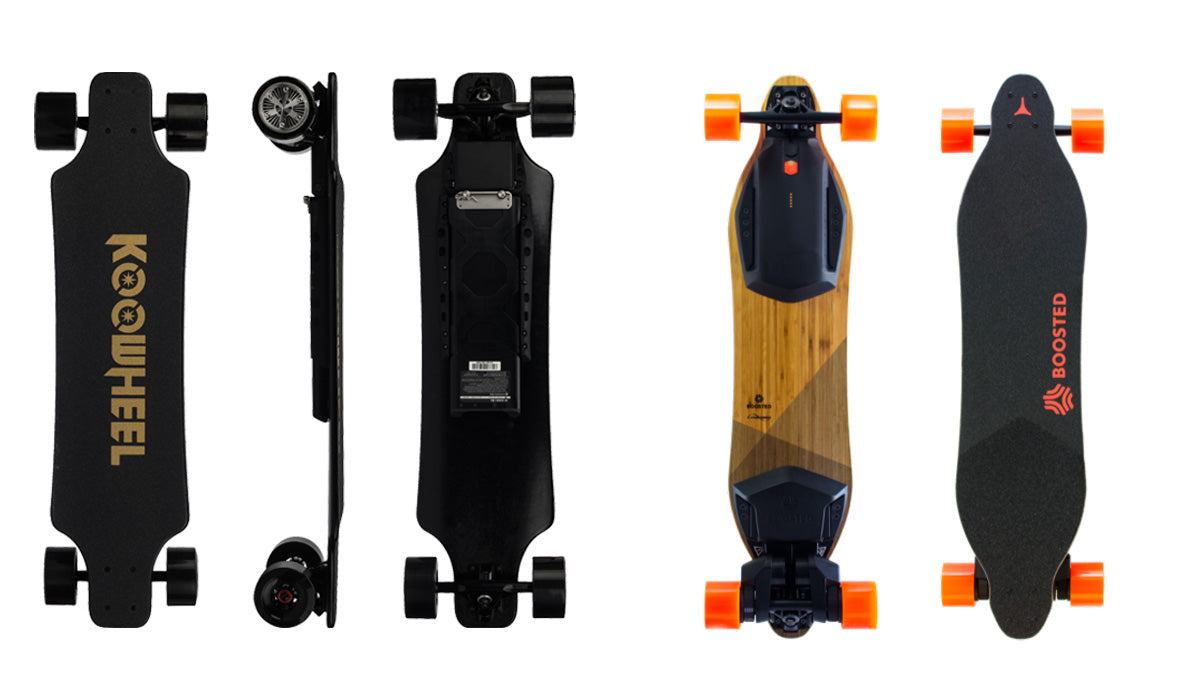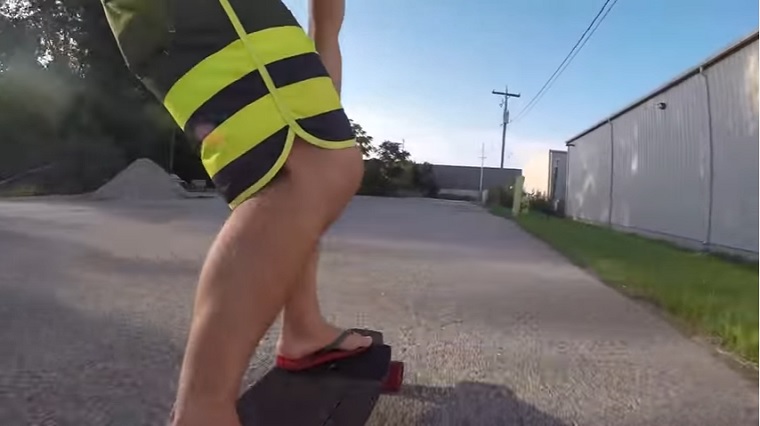

Slipping is a real thing, trust me on this.īoth boards have a companion app, that allows you to do things like change riding modes, check the battery and rename your board, but the inn boards app lets you control the board with your phone! It’s definitely a cool feature, but I stick to the actual remote for safety reasons. But I recommend staying off the roads when it’s wet - these wheels lose traction immediately when they’re exposed to water.

I can’t help a desire longer range, but again: both batteries are swappable, both boards are splash resistant.
INBOARD M1 VS BOOSTED BOARD 2 FULL
I don’t think Boosted’s batteries are meant to be swapped on-the-go, but yeah they’re replaceable, but again Inboard battery swapping mechanism is just so much better than Boosted’s.īoth boards have a range of about 4 to 5 miles when riding at full speed on the highest mode which is pretty good result for electric skateboards. You just open the latch, pop out the old battery, put the new one in, close the latch and you’re done!īoosted has these six screws in these plates and then this other connector. It literally takes 10 seconds to swap Inboard batteries. Both boards have battery systems, that let the user replace the batteries, but the Inboard solution is untouchable. I’m not sure what inverted 3d poplar wood is, but I can tell you this: the Inboard is super stiff, there is no flex whatsoever.Īnd the third and final key difference between the two boards: the swappable batteries. The website says: ‘it’s a custom-designed composite deck, that combines in inverted 3d poplar wood core with a full sandwich ABS sidewalls’. The Inboard is made of a composite wooden material. This really helps with bumps and shock absorption. And then there are the decks themselves: Boosted uses loaded longboards, which are bamboo and super flexible. Check out the underside of the Inboard: there’s nothing exposed save for these wires, virtually everything is concealed within the board and wheels. You’ve got the battery, the motor controller and hietzing and the motors themselves. The Boosted board components are all visible on the underside of the deck. Key difference number two: the way the boards are constructed. The belts allow for immediate action, which means the Boosted board accelerates much faster and is just more responsive in general. For example: you can’t rock back and forth on an Inboard the way you can on a Boosted board. So because the InBoard has hub motors, it isn’t as immediate to respond to controller command as the Boosted board is. You’ll never have to replace a belt on the Inboard though because it simply doesn’t have any. Replacing the belts on a Boosted board isn’t too much of a hassle, but it’s something every rider will have to do at some point. The drawbacks are: you sacrifice torque and responsiveness. There’s no belt and it looks way cleaner. The M1 board uses hub motors, everything is inside the wheels. The Boosted boards belt drive system allows it to be way more torque and was more responsive than the amours, but you need to replace these and you need a three millimeter alley key to do so. Key difference number one - the way the motors are designed.
INBOARD M1 VS BOOSTED BOARD 2 PLUS
They both weigh in at around 15 pounds and the Inboard has integrated headlights and taillights, that you can turn off if you want - something that boosts it completely lacks.īoth electric skateboards are expensive: the Boosted plus costs 1,399$ and the Inboard costs $1000 and although they’re priced very similarly, there are a few key differences between the two boards, that you should know about before you plunk down that rainy day fund or empty that piggy bank. I’ve never been able to hit more than 20.

The Boosted has a top speed of a true 22 miles an hour, while Inboard claims 22 for its board. Both boards go forwards and backward at full speed. The remotes both work similarly: you’ve got a Deadman switch that’s supposed to save you from accidental revs, meaning you can only make the board go when it’s held down. The Inboard M1 and second-generation ‘Boosted plus’ both work with proprietary wireless remotes, that pair to the board over Bluetooth.


 0 kommentar(er)
0 kommentar(er)
